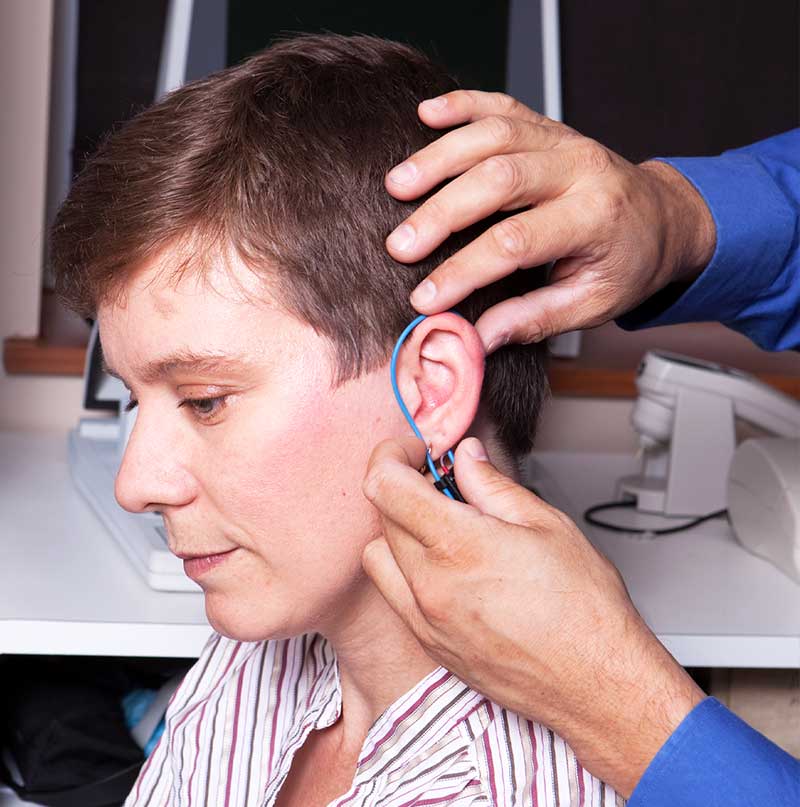Do I Need a Hearing Aid Fitting?
What to Expect At a Hearing Aid Fitting
A hearing aid fitting is about more than the way a hearing device sits in your ear. During a fitting session, we will run several diagnostics designed to make sure your hearing aids are working at peak performance.
Before your fitting, we will have a detailed conversation with you about your needs and capabilities. We’ll talk about the environments in which you might commonly use your hearing aid, the type of hearing aids you’re interested in, and so on. We will:
- A thorough hearing test will be conducted. This test will provide baseline settings for your hearing aid.
- If needed, earmold impressions will be taken of your ears (this will usually occur two weeks prior to your fitting session). This will help ensure a comfortable fit.
During a typical hearing aid fitting:
- A Real Ear test will be performed to ensure your hearing aid is providing the correct amount of amplification.
- We will make any final adjustments needed to ensure your hearing aid is in optimum working order.
- We will do a quick review of typical maintenance and upkeep tasks, such as how to change or charge the batteries of the hearing aid or how to sync it to your phone.
The duration of a fitting will vary depending on the nature of the appointment. In general, however, hearing aid recipients can count on an appointment that lasts somewhere between 45-120 minutes.
What Is Real Ear Measurement?
A Real Ear test or Real Ear measurement is a diagnostic tool designed to accurately measure the volume a hearing aid produces. During a Real Ear test:
- A thin tube containing a tiny microphone is inserted into the ear canal.
- The hearing aid is placed into position.
- Diagnostic sounds are played, and the volume output from the hearing aid is measured. These diagnostic sounds will range from very quiet to very loud.
- We will then ensure the output from the hearing aid is properly calibrated.
A Real Ear test is essential to the proper functioning of the hearing aid. Because modern hearing aids are highly customizable, this diagnostic ensures each setting is optimized for the experience of the individual wearer. A Real Ear test will tell us whether the amplification levels are in the right volume and frequency range for your hearing loss.
A Real Ear measurement takes much of the subjectivity out of a hearing aid fitting, which can be especially useful if you are being fitted for your first hearing aid.

For the past 25 years, Real Ear Measurements (REM, Probe testing) has been performed by Optimum Audiology and Dr. Mendoza. Gustav Mueller, Ph.D., a pioneer and leader in this field trained Dr. Mendoza.
At Optimum Audiology, we are aware that a proper fitting of your hearing aid is the greatest method to verify hearing aid integrity, to provide you the best chance of a successful fitting, and to make the most of hearing aid technology for your particular hearing loss. It’s likely that your hearing aid is not fitted specifically for your hearing needs if this crucial step is skipped. Furthermore, since the hearing aids weren’t tested, any potential flaws won’t be known.
Dr. Mendoza has long supported this Real Ear measurement and fits hearing aids in accordance with “Best Practices.” She uses the most recent hearing aid technology, has up to date calibrated equipment, and does Real Ear Measurements for each new hearing aid delivery, and at annual intervals.
Why Are Hearing Aid Fittings Important?
A proper fitting is vital for successful treatment for hearing loss. When you undergo a fitting, you help to ensure the proper function of your hearing aids, making you more likely to reap the benefits of wearing hearing aids.
Hearing aid fittings are important because:
A hearing aid fitting is designed to maximize the potential of any given pair of hearing aids. After all, no two pairs of ears are the same. Each individual brings unique requirements and features to the table. It’s no surprise, then, that the best hearing aids are those that are customized to be equally as unique.